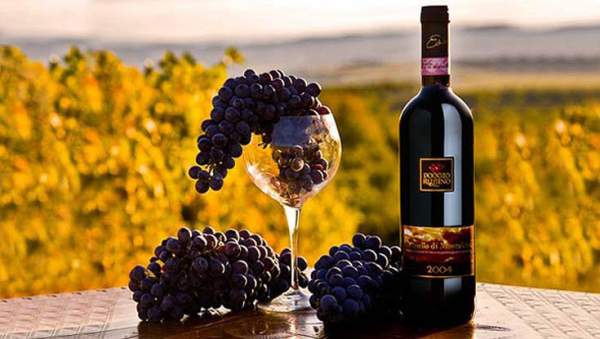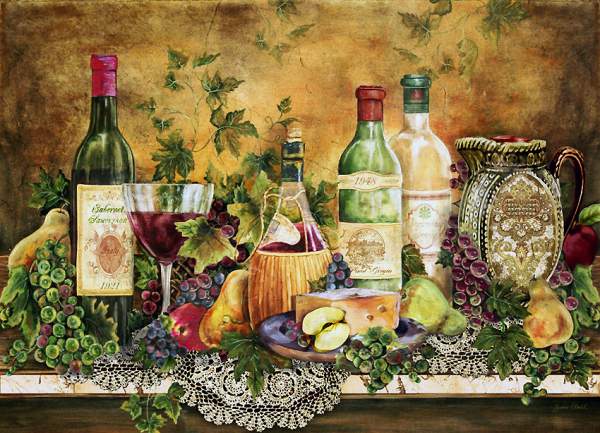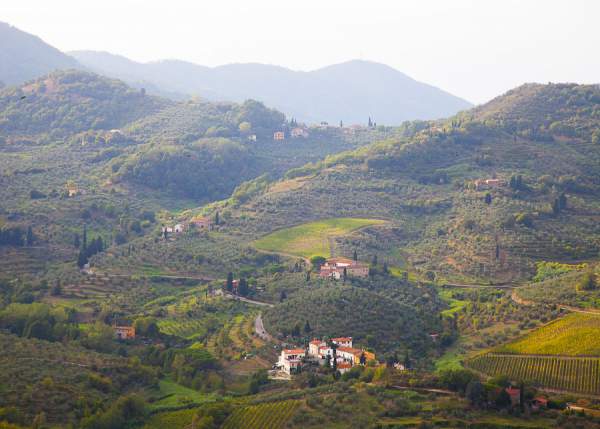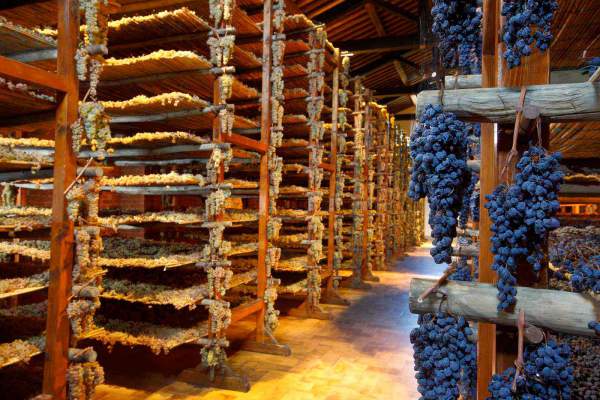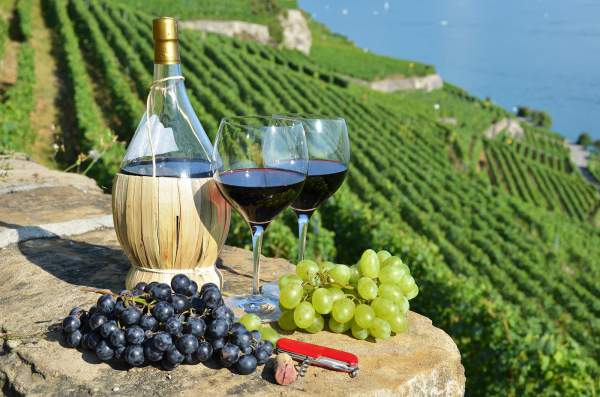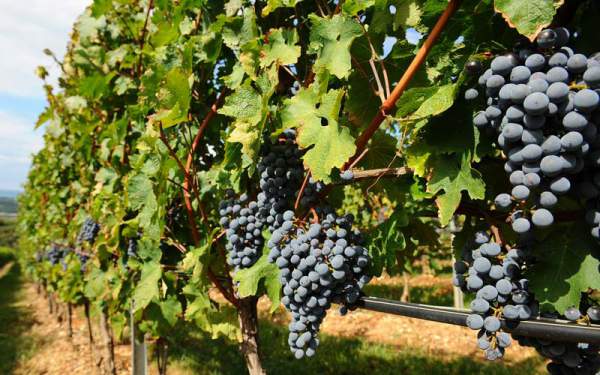If the villas of the provinces of Montalcino and Prato were suddenly removed from the best European wineries list, not a single sommelier today would mention Italian wine in his restaurant list. Of course, the beauty of Florence impresses the fans of Italy, but the taste of Tuscany wine will remain in their memory forever.
Page Contents
Culture of winemaking
They joke that due to the increased interest of travelers in wine farms, architecture of Italy is completely deprived of attention. It is noteworthy that Tuscany wine producers regularity deliver thousands of bottles of the local wine to the table of Italian and European gourmets and restaurants.
Tours around Tuscany are popular and are profitable for the local businesses. Those who like Antinori Classico and Carmignano Rosso come to the famous wine region in large groups. Travelers take photos of stunning landscapes and get familiar with the culture of wine by visiting vineyards and tasting the best varieties of wines.
Types of Tuscan red wine
Ordinary red wine
- young red: a typical example is a well-produced Chianti – the drink is supposed to be fresh, bitter, and slightly foamy. The product, ready for use, should not be older than a year. The business card of such a drink is a light, exquisite astringency;
- classic: red and rosé wines – Classico and Rosso – made in the estates of Montalcino, Montepulciano, Carmignano. Fragrant, full-bodied drink with intense cherry and currant accords typically of Sangiovese grapes;
- wines from farm wineries: wines marked as Vino da Tavola from wealthy wineries are in demand on the world market. This also includes the Riserva type.
Premium red wine
- Chianti Classico Riserva (Chianti Classico Reserva) is distinguished by a subtle richness of taste with a distinct berry accent and a pleasant spice inherent in the Sangiovese vine berries;
- Carmignano;
- Brunello di Montalcino;
- Vino da Tavola;
- delicate Italian Vino Nobile.
Excellent white wines
- Vernaccia di San Gimignano from the city of San Gimignano;
- Bianco Vergine Valdichiana.
How to choose an excellent Tuscan wine?
Chianti is a reasonably affordable wine, widely represented in Italy, and the price in retail shops differs slightly. However, choosing a good bottle is better to be treated with caution. Some importers and budget restaurants in Italy are buying up booze, the price of which is lower, which results in its quality as well. Red wine bought outside of Tuscany can easily be a fake.
Classico and Rosso by Brunello, Carmignano, Vino Nobile and wine marked as Vino da Tavola better to buy in branded shops. White wine is hard to find as Tuscany specializes in red wine.
Vineyard villas in Tuscany
Bright green hills and peaks – the Tuscan valley looks unreal! Somewhere out there, behind cypress groves and rows of olive trees, is Carmignano, a friendly commune village. This is the smallest winery in Italy, with a total vineyard area of 220 hectares.
An introductory tour around the wineries will show you Italian hospitality and generosity. Besides, the price of wine in this place of Tuscany is 10-12% lower than in the nearby towns. After the tour, helpful farmers will offer you to buy the wine and food you like, and if needed, they will advise you on a place to relax or stay overnight—each villa in the town surprises in its own way. Tenuta Le Farnete, Capezzana, Artimino, Piaggia are the most popular ones among tourists.
Carmignano
Brillante Carmignano
A fragrant purple-red drink with a fruity expressiveness and notes of violet, made from Sangiovese berries and black canaiolo. Served with meat and poultry dishes.
By the way, Carmignano wine is recognized as one of the oldest in Italy. At the State Archives of Florence, a lease sheet is kept, indicating that in 804, the Italian production of wine and olive oil was actively developing in the municipality of Carmignano. The exact use of this wine name dates back to 1396. In the bill of lading, the notary Lapo Mazzei asks the merchant Marco Datini to sell red wine in 15 barrels, promising that the price per barrel will be four times higher than for the products of the other winemakers of Parto.
Barco Reale di Carmignano
Red Barco Reale di Carmignano belongs to the Carmignano kind of wines with richer berry flavor and aroma. Vin Santo, a dessert treat aged up to 5 years, has a straw, almost amber hue, and softness. It is usually served with floury sweets from the Prato province.
Read Before Buying
‘Classico’ means that the wine was produced under strict control over winemaking technology.
‘Riserva’ indicates the elite quality of a product made according to the principles of long aging. In practice, this refers to the good dryness of the drink.
‘Vino da Tavola’ mark is put on the bottles of the villa manufacturer, which often indicates exceptional quality – fermentation according to the principles of DOC.
Tip! Be careful, there are low-grade cheap bottles marked “Vino da Tavola” on sale – its price hints at the quality of wine!
Against the recipes and traditions
On the hills of fertile Tuscany, the famous Chianti wine is produced – it is revered throughout the country as a kind of symbol that presents Italian winemaking to the world.
Villa Tignanelio and later Sassicaia villa joined and chose their own independent method of vines treatment to demonstrate the unlimited potential of the Tuscan land. Setting aside traditional methods, growers experimented with different varieties and aging periods. Thus, their own “rebellious” recipe was born.
In search of the best taste, farmers mixed traditional and forbidden grape kinds – Merlot and Cabernet Sauvignon. The result is a fermentation of a pure Sangiovese aged in atypical oak barrels of an atypical size. The price of the was impressive. It was positioned as wine for dinner. Vina da Tavola became famous in the 80s, attracting with frilly bottles and were called ‘Sammarco’ or ‘Cepparello.’
Antinori
Antinori (Antinori) produces Chianti Classico since Autumn 2012. This place, close to the museum, tells the true story of the birth of Tuscan wine. Antinori’s cellar holds up to 2,000 wine barrels. Visanto Antinori is a top wine made from raisined trebbiano and dried malvasia. A strong drink of bright color with a nutty flavor. The famous varieties of this winery are: Villa Antinori Toscana, Marchesi Antinori, Peppoli Chianti Classico.
This place is the birthplace of the Antinori dynasty, so a winemaking museum has been organized in the new building, and a restaurant named after the founder is on the roof. Its history, prices of local dishes, and alcohol attract all travelers without exception. The Antinori family has been producing wine since 1180.
By the way, visiting the tasting rooms of the new Antinori winery in Chianti Classico is also worth visiting because the impressive building was recognized as the best building of 2014. In addition, it is the only one of all the wineries of the Antinori dynasty in which the presence of tourists is allowed.
Where else to go and what to try?
Tuscany is a region where almost all red wine is made from Sangiovese. Chianti and Antinori are made from small Sangiovese piccolo (small) grapes, while Brunello di Montalcino is aged from the larger Sangiovese grosso (big) grapes. This wine is always fresh, a little harsh in taste, with herbal and spicy notes.
In many Florentine bars, young wine is bottled from straw-lined 2-liter bottles called ‘fiascos.’ This is an old Italian invention. Such bottles for storing wine today are rarely used. It was this drink that Baron Ricasoli, the wine producer of the 19th century, meant by Chianti. This red wine is obtained in the first year after the removal of the berries.
Winemakers of the past aged Chianti in old oak barrels, and not too strict laws of those times allowed the blend to contain up to a third of trebbiano, giving the wine an unpleasant orange note. Fortunately, new regulations reduced the permitted percentage of white grapes by almost ten times. Now the use of impurities is completely prohibited. Typically, a high-quality drink of this brand can contain no more than 10% of by-products.
Villa Tignanello started the tradition that most top-notch Chiantis contain a certain amount of Cabernet, Italian Merlot and Syrah vines in addition to Sangiovese.
Villa Camignano (Carmignano) – is a delightful place in the west of Florence, where excellent cabernet is cultivated. Capezzana and Trefiano villas are the top producers. These manufacturers make wines in those little oak barrels: such a product almost does not lose its fruity aroma and does not oxidize. In this region of Tuscany, it is better to take Classico type wines: Antinori, Castellare, Castello di Volpaia, Ruffino, or Basciano.
Vine with character
Sangiovese can acquire new taste traits depending on the place of its cultivation. The vines, grown on scarce land and in a cool climate, fill the wine with a deep, rich, expressive taste – elite Brunello di Montalcino is made of this type of grapes. This variety is incredibly appreciated throughout Italy. It can indeed be considered a magnificent, complex wine. However, not all available options are worth the cost.
The norms oblige making wine in barrels, which are not always convenient for fermentation. But from the young wine Rosso di Montalcino (Rosso Montalcino), you can expect an expressive mild taste if you extend its exposure time. The drink has an excellent less seasoned rendition of Rosso – Rosso di Montepulciano.
The best Rosso wineries.
The wines produced by Altesino, Caparzo, Costanti, Argiants are in the greatest demand.
The Chianti Classico wine-growing area in Tuscany is the leading of the seven existing Chianti areas in Italy. All the best Tuscan wines come from the estates of experienced winemakers. Raw materials for real Chianti “classic” and “Rosso” are obtained from the distinguished winegrowers of the region. Due to lower standards, it is challenging to get a high-quality drink, even in Italy. But elite producers of wines like Antinori are confidently following viticultural traditions even in the commercial production of spirits.
 Italy for me From Italy with love
Italy for me From Italy with love


